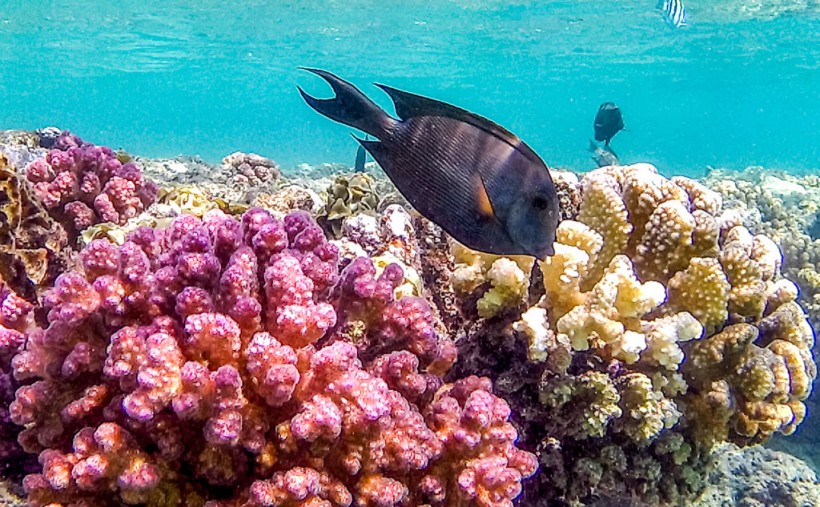Coral reefs have been slowly eroding as a result of environmental neglect, human activities, and global warming, which causes coral bleaching. Only a third of these coral reefs are left today and further deterioration could disrupt marine food supplies, sources of revenue for tourism, and other aspects.
Hence, researchers from the Chulalongkorn University in Thailand are hoping to save these remaining coral reefs through 3D printing.

(Photo : KHALED DESOUKI/AFP via Getty Images)
Striated surgeonfish (Ctenochaetus striatus) swim by a coral reef off the dive spot of Abu Dabbab along Egypt's southern Red Sea coast north of Marsa Alam on September 17, 2022. - Beneath the waters off Egypt's Red Sea coast a kaleidoscopic ecosystem teems with life, that could become the world's "last coral refuge" as global heating eradicates reefs elsewhere, researchers say.
Rebuilding Coral Reefs
The plan, known as 3D Innoreef, aims to rebuild coral reefs all around the world. The researchers claim that the design and makeup of this technology could aid in reviving the existence of royal corals through 3D-printed reproductions.
As reported first by New Atlas, groups of three modules are arranged and connected like Lego blocks on the ocean floor, acting as a single "roost" for planulae or free-swimming coral larvae.
The larvae start manufacturing calcium carbonate once they have settled into the crevices of the modules, thereby creating a real reef on top of the concrete.
The concrete's surface has previously been pre-coated with calcium phosphate, which is necessary for coral growth and will help the larvae thrive.
The plan appears to be successful; corals were seen to develop roughly three to four centimeters (1.2 to 1.6 in) faster on several Innoreefs erected along the Chonburi province coast of Thailand since 2020, in comparison to natural reefs.
Additionally, the Innoreefs' holes and hollows give fish, invertebrates, and other creatures a place to hide, luring them back to the reefs' restored habitats.
Read Also: 'Chameleon Robots:' These Robots Can Change Colors and Mimic Their Surroundings Through 3D Printing
Smart Stations
The modules can also store reef-health monitoring sensors; scientists have previously modified Innoreefs to function as "smart stations" that track variables like water temperature, pH, and tidal pressures.
"These measurements benefit not only the marine species in the Innovareef but also the entire coral reef where the Innovareef is installed," Associate Professor Dr. Nantarika Chansue, Director of VMARCE and Head of Ornamental Aquatic Animal and Aquatic Animals for Conservation Research Unit (OAAC), said in a statement.
"As we all know that coral bleaching is caused by the rising temperature of seawater causing corals to die. With these smart stations, we now have sufficient data to save the entire coral reef."
Dr. Nantarika intends to make Innovareef more realistic-looking by adding more details and reducing its production costs in the future.
The research team is currently collaborating with Chula's Faculty of Engineering to incorporate nanotechnology into the Innovareef so that it can be protected against the effects of global warming.
Related Article: Scientists Are 3D Printing Insects and Mixing Them With Vegetables To Help Solve Food Crisis
This article is owned by Tech Times
Written by Joaquin Victor Tacla





